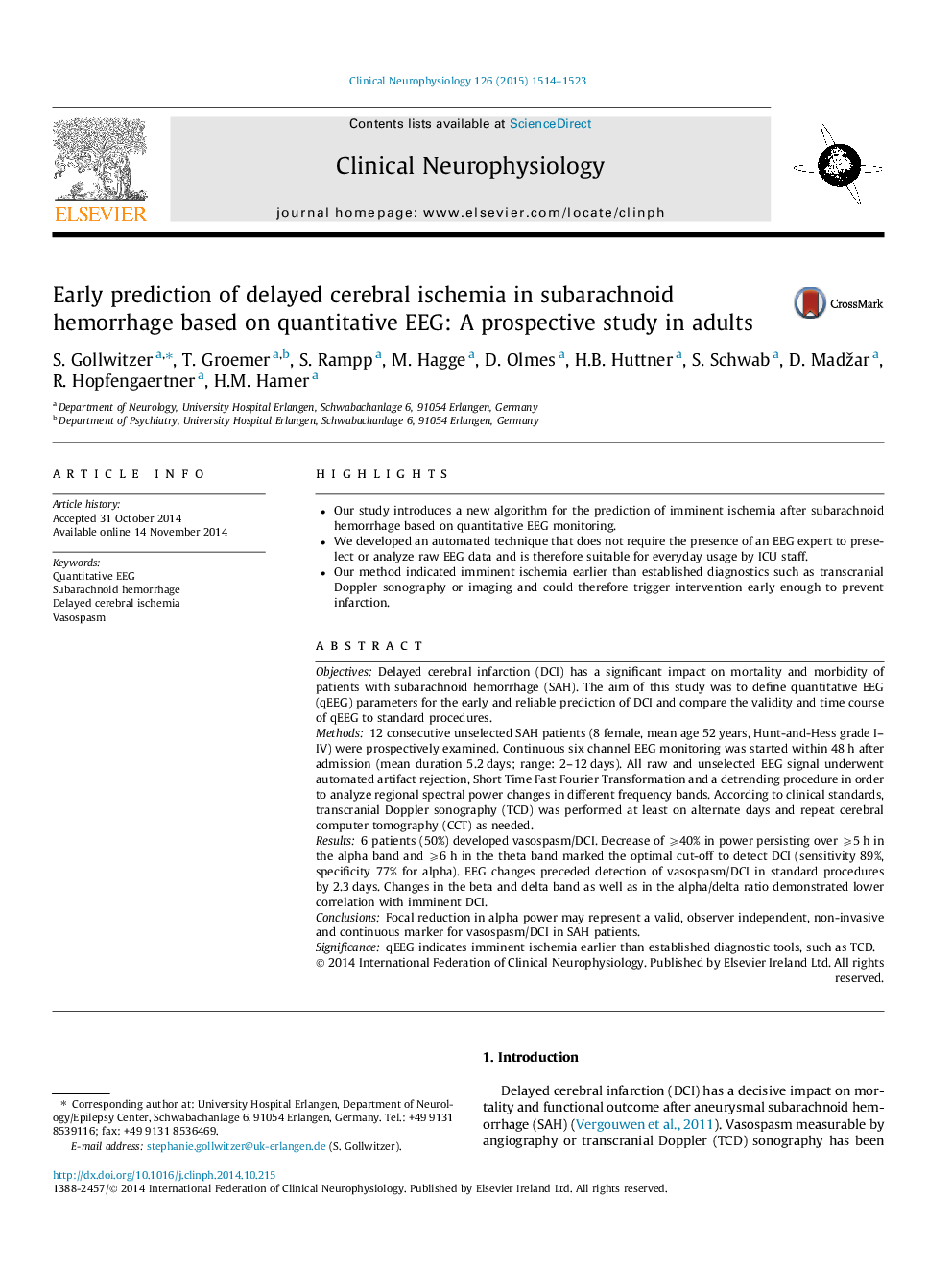| Article ID | Journal | Published Year | Pages | File Type |
|---|---|---|---|---|
| 3042551 | Clinical Neurophysiology | 2015 | 10 Pages |
•Our study introduces a new algorithm for the prediction of imminent ischemia after subarachnoid hemorrhage based on quantitative EEG monitoring.•We developed an automated technique that does not require the presence of an EEG expert to preselect or analyze raw EEG data and is therefore suitable for everyday usage by ICU staff.•Our method indicated imminent ischemia earlier than established diagnostics such as transcranial Doppler sonography or imaging and could therefore trigger intervention early enough to prevent infarction.
ObjectivesDelayed cerebral infarction (DCI) has a significant impact on mortality and morbidity of patients with subarachnoid hemorrhage (SAH). The aim of this study was to define quantitative EEG (qEEG) parameters for the early and reliable prediction of DCI and compare the validity and time course of qEEG to standard procedures.Methods12 consecutive unselected SAH patients (8 female, mean age 52 years, Hunt-and-Hess grade I–IV) were prospectively examined. Continuous six channel EEG monitoring was started within 48 h after admission (mean duration 5.2 days; range: 2–12 days). All raw and unselected EEG signal underwent automated artifact rejection, Short Time Fast Fourier Transformation and a detrending procedure in order to analyze regional spectral power changes in different frequency bands. According to clinical standards, transcranial Doppler sonography (TCD) was performed at least on alternate days and repeat cerebral computer tomography (CCT) as needed.Results6 patients (50%) developed vasospasm/DCI. Decrease of ⩾40% in power persisting over ⩾5 h in the alpha band and ⩾6 h in the theta band marked the optimal cut-off to detect DCI (sensitivity 89%, specificity 77% for alpha). EEG changes preceded detection of vasospasm/DCI in standard procedures by 2.3 days. Changes in the beta and delta band as well as in the alpha/delta ratio demonstrated lower correlation with imminent DCI.ConclusionsFocal reduction in alpha power may represent a valid, observer independent, non-invasive and continuous marker for vasospasm/DCI in SAH patients.SignificanceqEEG indicates imminent ischemia earlier than established diagnostic tools, such as TCD.
